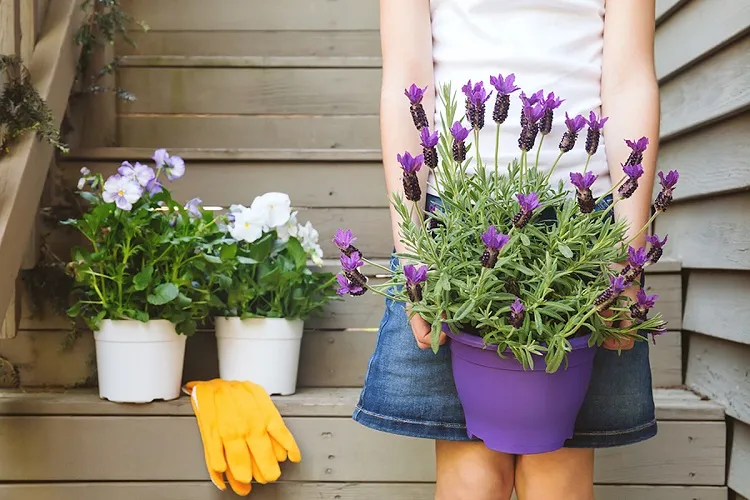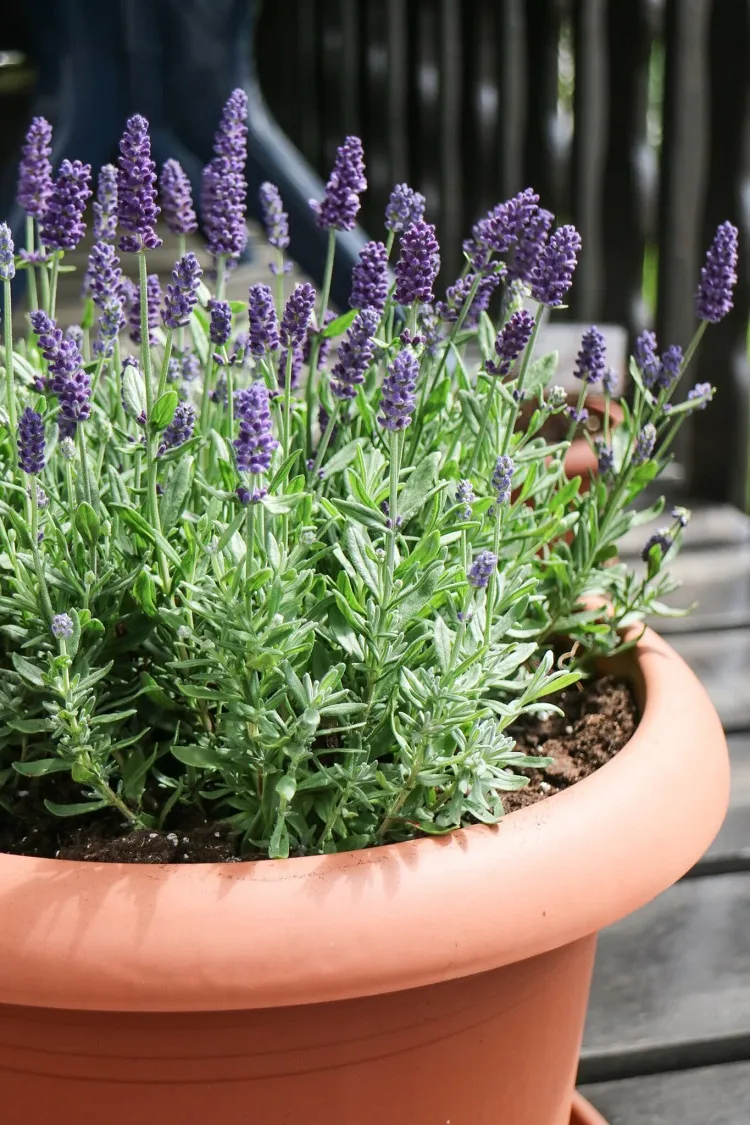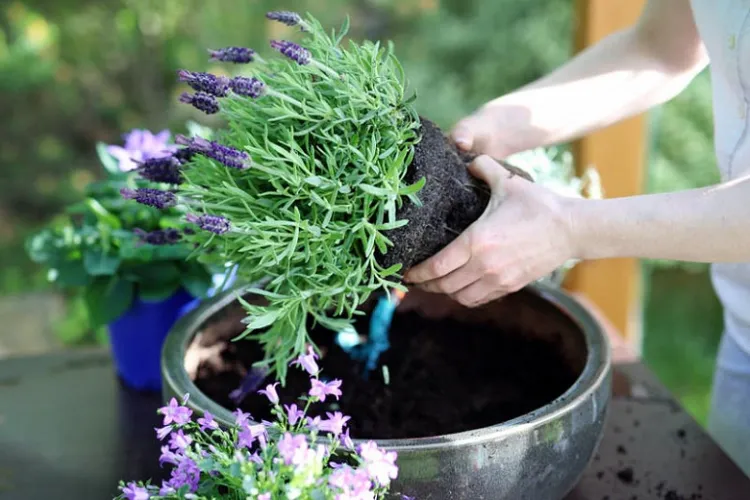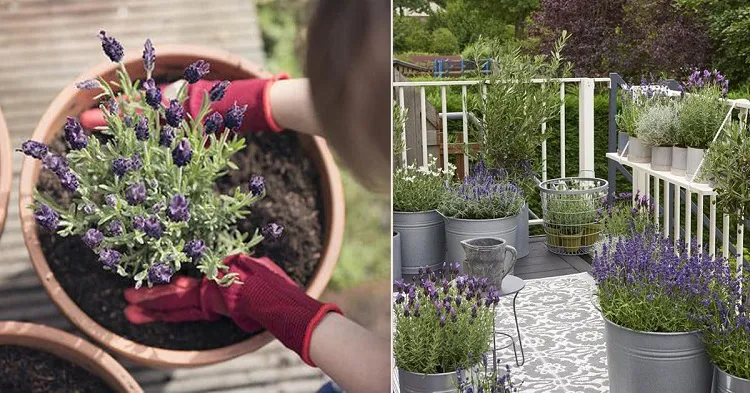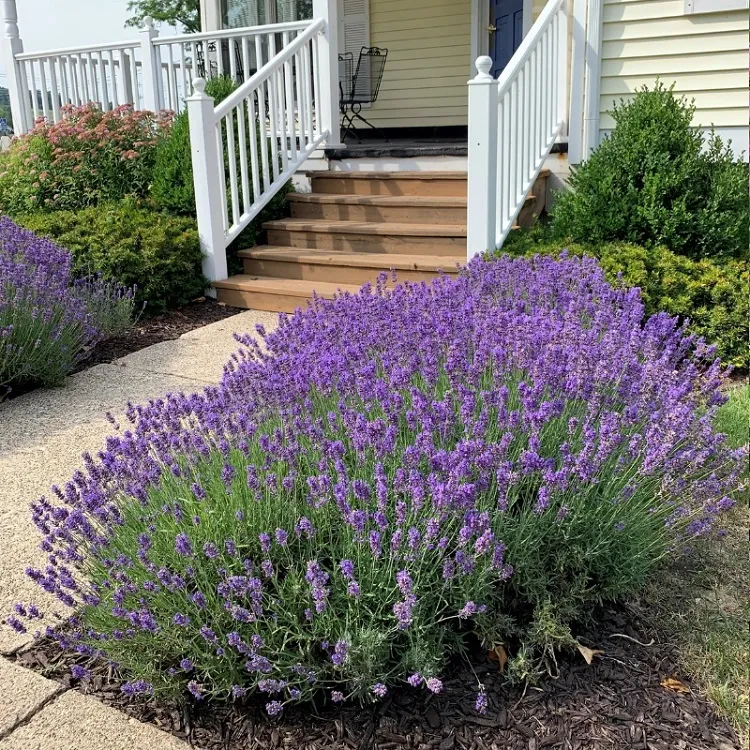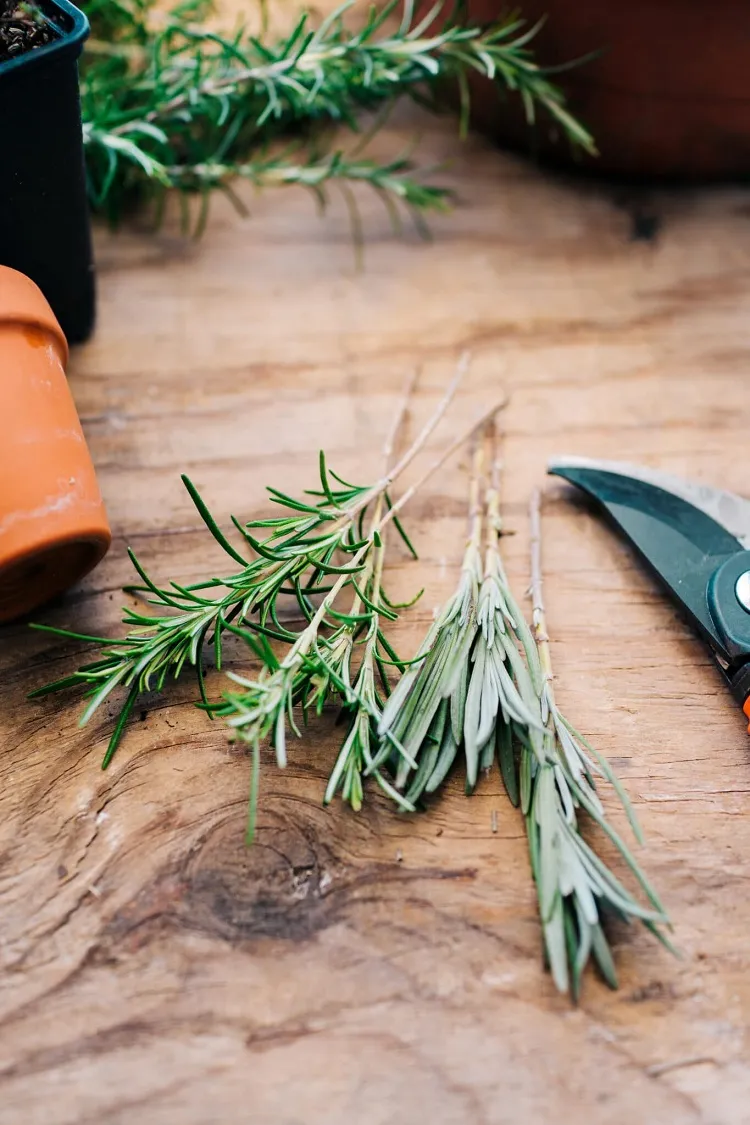A garden staple, lavender is a superb hardy plant that requires little maintenance. However, you have to take good care of it to enjoy its wonderful scent. Here is our little practical guide how to take care of your lavender: flowering, watering, pruning and propagation. We have everything on the subject.
Small Practical Guide to Growing Lavender
Lavender evokes thoughts of summer, sun and the Mediterranean! Do you want to plant it in your garden as a low hedge or border? There are, however, a few important points to consider before you get started. Native to the Mediterranean region, lavender loves the sun. It requires little care and tolerates heat waves well. No need to opt for a drip system. In pots or in the soil, lavender appreciates drained soil. Combine it with other drought-tolerant plants to create a Mediterranean garden. Prune in late fall. It is not necessary to use fertilizer. Lavender is a perennial plant that can last up to 15 years or more if grown and cared for properly.
When and How to Plant Lavender?
Lavender grows everywhere in France, especially in the warmer regions of the country. Although planting is done in the fall, you can also plant it in the spring. Choose a sunny location with well-drained soil. If it’s more clayey, mix it with sand or gravel. To make a lavender hedge, space the plants 30 to 40 cm. Most cultivars tend to spread. It is therefore important to provide them enough space to develop. Once your plants are established, water just to moisten the soil. In pots, watering is more frequent.
How to Take Care of Your Lavender – What About Potted Culture?
Growing lavender in a pot is quite possible. In fact, it’s a great idea for anyone looking for patio and balcony decorating ideas. However, avoid too sunny locations, as the soil in the pot dries out quickly. Use a potting soil for flowering plants and water as soon as the surface is dry, but without leaving stagnant water at the bottom of the pot.
Which Variety of Lavender to Choose for Hedges and Garden Borders?
Lavandula angustifolia, also called English lavender or common lavender, is the most popular species for hedges and borders. It is often harvested from late spring to mid-summer for its essential oils and flowers. Other gorgeous varieties to choose from:
- Betty’s blue – compact in size
- Folgate – small and compact
- Miss Katherine – exquisite pink lavender
- Munstead – dwarf lavender, compact and very hardy
- Nana Alba – small compact plant
- Rosea – compact, dense and bushy plant
- Royal Purple – upright, spreading cultivar
- Royal Velvet – medium sized compact cultivar
- Grosso – vigorous, compact ball shape, dense vegetation, very floriferous
- Provence – greyish foliage, long flowering
- Pedunculate lavender – compact size, gray-green foliage, purplish-blue flowers
- Ballerina – – very pretty flowering
- Fathead – small, compact, dense, rounded bush
- Kew red – upright crimson ears
- Regal Splendor – compact, purple flowers
Pruning and Care of Lavender for a Beautiful Bloom
Strongly recommended each year, pruning the lavender keeps the plant compact and promotes flowering. But when is the best time to do it? At the end of winter, remove the top third to encourage bushier growth and more abundant flowering. If the winter climate is fairly mild in your area, you can also prune in the fall. Normally, it should not be done on plant that still has foliage. Lavender blooms all summer. After flowering, remember to cut the flower stalks so as not to exhaust the plant unnecessarily. Once cut, its flowers are an excellent anti moth solution. Lavender can be stored for several months or even years if kept in a dry place away from direct sunlight.
Lavender: Flowering and Propagation
When it comes to propagating lavender, it all depends on the variety. Usually, it is propagated by by cuttings. Generally, lavender can be sown in early spring. Its germination is sometimes a little slow. It is then planted in spring, in humid regions, or in autumn in mild winter regions. As for the cutting, it is done at the end of the summer season. For this purpose, cut a beautiful branch of 20 centimeters before it forks. Keep one end of the fork at 2 centimeters and the other at 6 cm by cutting all the leaves from the stem. Put these cuttings in a pot filled with seedling soil. Water and place half a bottle on top for a “stewed” cutting. Place your pot in the shade and make sure the soil is moist. In winter, keep it on your porch or in a greenhouse. In the spring, plant it in your garden.

